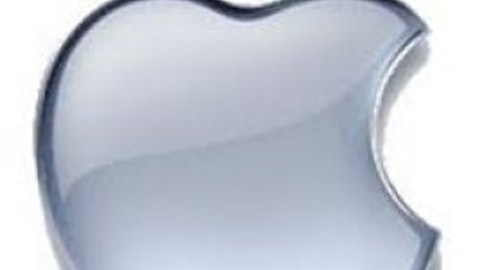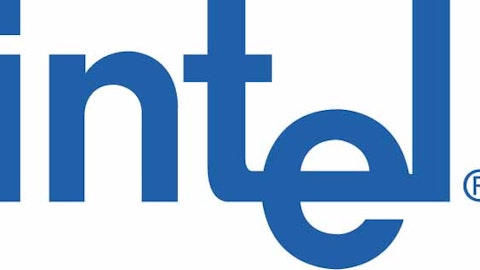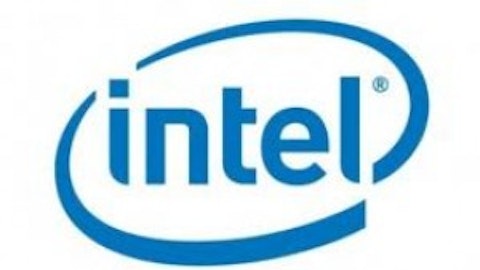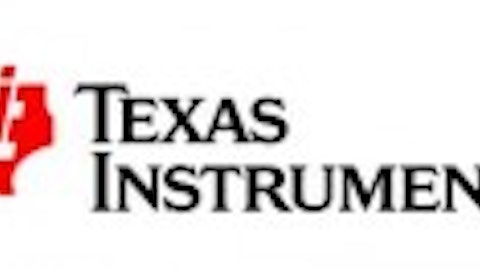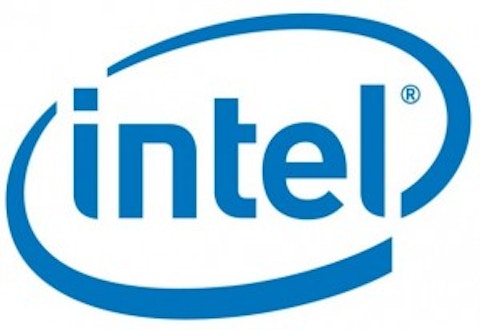
Intel largely met analyst estimates when it announced earnings last Wednesday, posting revenue of $12.8 billion and net income of $2 billion for an EPS of $0.39. What caused concern was the company’s revised guidance for the full year, reducing an expected singe-digit percentage revenue increase to flat revenue year-over-year. Along with this revision Intel Corporation (NASDAQ:INTC) cut its capital spending budget for the second time this year, reducing it by $1 billion to $11 billion for the full year.
The market reacted poorly, sending Intel shares lower on the news. Intel is now down a little over 5% from before the announcement, adding to losses incurred when the stock was recently downgraded. Is the market right to be pessimistic? Or is it ignoring the big picture?
A company in transition
Intel Corporation (NASDAQ:INTC) split itself into five different groups in its earnings report:
- PC Client Group – The bulk of Intel’s business, this group is responsible for notebook and desktop platforms, as well as connectivity products.
- Data Center Group – Delivers platforms for server, workstation, and storage computing market segments. This is the second biggest division.
- Other Intel Architecture Group – This vaguely named division is responsible for platforms for tablets, phones, and netbooks, as well as other mobile phone components.
- Software and Services Group – Software which supports the Intel platform as well as subsidiaries like McAfee.
- All Other – Anything that doesn’t fit into the above categories, including NAND flash memory products.
Of the $12.8 billion of revenue for the quarter, 63% comes from the PC client group and 21% comes from the data center group, leaving only about 16% for all of the other divisions. Clearly Intel Corporation (NASDAQ:INTC) is still seriously dependent on the PC and server markets. The other three groups reported an operating loss for the quarter totaling $1.2 billion, while the PC client and data center group posted a cumulative operating income of $3.9 billion.
Intel’s core businesses are still making plenty of money, although the PC business is in decline as the market weakens. If you exclude the unprofitable groups Intel’s net income would have been about $2.9 billion instead of just $2 billion.
Intel Corporation (NASDAQ:INTC) is spending heavily, developing products that will be competitive in the mobile market, but the company was far enough behind that this transition will take time. How did this happen? Well, Intel has been fighting a different war for years.
More power!
Before smartphones and tablets Intel staked out its dominance in the PC market by battling Advanced Micro Devices, Inc. (NYSE:AMD). For a long time desktops were the main form factor, and Intel Corporation (NASDAQ:INTC) focused on making their processors as powerful as possible. There was no focus on energy efficiency at all, as both companies tried to outdo one another and create the most powerful processor. Laptops didn’t change this dynamic too much, as Intel continued to focus on speed.
When mobile devices like smartphones and tablets started to become popular Intel Corporation (NASDAQ:INTC) didn’t have any products that were energy efficient enough to run them for an acceptable length of time on a battery. A powerful tablet that only lasts an hour on battery isn’t much use to anyone. Because of this, mobile devices used processors based on the ARM architecture instead of Intel’s x86 architecture.
Now, there’s nothing inherently more energy efficient about ARM compared to x86, it’s simply a matter of Intel not trying to make its chips energy efficient. That was never the focus. So when smartphone and tablet sales exploded Intel Corporation (NASDAQ:INTC) had nothing to offer. The company had to go back to the drawing board, and during this time sales of ARM-based chips went through the roof.
Advanced Micro Devices, Inc. (NYSE:AMD), I think, is in serious trouble. The company is number two in a declining market and doesn’t have anywhere near the resources of Intel to push its way into the mobile market. After battling Intel for years and losing, the company is in poor position to capitalize on the shift to mobile. AMD reported its earnings last week, posting a revenue decline of 18% year-over-year and a net loss of $74 million. Shares took a dive, falling by 13% the following day. Last year Advanced Micro Devices, Inc. (NYSE:AMD) posted a net loss in excess of $1 billion.
A big step
When Intel Corporation (NASDAQ:INTC) released the newest iteration of its Core line of processors in June, dubbed Haswell, the focus was for the first time energy efficiency. Intel claimed that the mobile versions of the chips, aimed mainly at ultrabooks and hybrid devices, would increase battery life by up to 50% over previous generations while offering better graphics to boot.
Intel has been trying to push the ultrabook, which is a super-thin and light laptop, and Haswell should allow for battery life that was unheard of a few years ago. Many people are opting for inexpensive tablets, but for those that do more than simply browse the Internet an ultrabook or hybrid device makes more sense.
While Haswell is aimed at more high-end devices, Intel Corporation (NASDAQ:INTC)’s Atom line of processors is aimed at the tablet market at large. Atom began its life in netbooks, a fast-growing market which almost completely disappeared as tablets became popular. Now Intel is working to make the Atom processor suitable for tablets, and the company had its first big win when Samsung announced that its Galaxy Tab 3 tablet would ship with an Intel Atom processor and Intel’s 4G LTE product.
This is important for two reasons. First, it’s the first big win for an Atom chip in a tablet. Second, Intel finally has an 4G LTE modem to offer with its processors. Qualcomm, the leader in the mobile processor space, also dominates the LTE modem market. Intel needed to offer a complete solution, including a modem, and now it does.
QUALCOMM, Inc. (NASDAQ:QCOM) is sort of like the Intel Corporation (NASDAQ:INTC) of mobile, dominating the space with its ARM-based processors. Qualcomm’s dominance comes with lush margins – in 2012 the company had an operating margin of 32%. Intel only managed 27%.
One advantage that Intel has over QUALCOMM, Inc. (NASDAQ:QCOM) is that only x86-based processors can run the full version of Windows 8. There is Windows RT, the ARM version of Windows, but companies are abandoning that version left and right and Microsoft recently slashed the price of its own Windows RT tablet due to poor demand. Windows-based tablets will likely be dominated by the full Windows 8, and Intel is in prime position to pick up most of that market.
Intel chips can also run Android, and this gives Intel another advantage over Qualcomm. Since the same tablet with an Intel Corporation (NASDAQ:INTC) chip could run both Windows and Android, manufacturers may opt for Intel so that they don’t need to design two separate tablets, one x86 and one ARM. Instead they could design just one tablet and sell two versions, one with Android and one with Windows. If Windows 8 tablets gain popularity then this could be huge for Intel and a big negative for QUALCOMM, Inc. (NASDAQ:QCOM).
A big risk for Qualcomm is that it loses the high-end market to Intel. Margins are the highest for high-end tablets, and given that Intel’s processors are typically more powerful than ARM-based alternatives QUALCOMM, Inc. (NASDAQ:QCOM) could start losing that business. This would seriously reduce margins.
The bottom line
Quarter-to-quarter Intel Corporation (NASDAQ:INTC)’s results don’t mean all that much. It’s the big picture that matters, and it will be a few years until we know if Intel’s strategy will pay off. The PC will not die completely, but the decline will likely continue. Intel’s push into mobile is a slow one, but I think that it will eventually be successful. Qualcomm stands to lose the most, as its huge margins are unlikely to last for long. Intel has the resources to push its chips to be more energy efficient while continuing to be more powerful than ARM-based processors, and eventually this will win the company market share.
The article A Marathon, Not a Sprint for This Tech Giant originally appeared on Fool.com and is written by Timothy Green.
Timothy Green has no position in any stocks mentioned. The Motley Fool recommends Intel Corporation (NASDAQ:INTC). The Motley Fool owns shares of Intel and QUALCOMM, Inc. (NASDAQ:QCOM). Timothy is a member of The Motley Fool Blog Network — entries represent the personal opinion of the blogger and are not formally edited.
Copyright © 1995 – 2013 The Motley Fool, LLC. All rights reserved. The Motley Fool has a disclosure policy.

